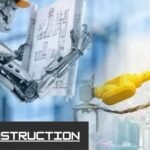Robotics Technology:
Robotics technology is evolving quickly, establishing advances and holding endless possibilities for the betterment of humanity. Robotic technology advancements have made it possible to build machines that can perform tasks with extraordinary speed and accuracy. They can perform tasks from the simplest to the most complex and demanding in our daily lives.
Over the next few years, the robotics business is expected to rise significantly. According to estimates, the industry could be worth up to $260 billion by 2030. Professional services robots that perform useful duties for humans, such as cleaning, delivering, and transporting, will account for the majority of this growth.
What is Robotics?
Robotics is a branch of technology that includes the design, construction, implementation, and management of robots. Robotics refers to applications that are designed to perform a particular task or series of tasks for commercial reasons.
The Robotics is an intersection of fields that includes electronics, mechanics, computer science, artificial intelligence, and control systems. It covers both the theoretical and practical elements of robot design and programming. It also covers the integration of robots into a variety of applications.
Robots are becoming more prevalent in both everyday life and industry. 88% of businesses aim to spend money including robotics in their operations. Around three million business robots are in use worldwide. Every year about 400,000 new robots are introduced to the market.
Applications of Robotics Technology

Robotics has revolutionized many industries and has opened up new possibilities for human productivity and creativity. Nowadays, repetitive duties are carried out by robots.
They could appear to be standard humanoid robots, robotic exoskeletons, or robotic arms. Robots are used to perform a wide range of tasks from simple to complex. Following are some applications of robotics.
Artificial Intelligence Robot
Robotics and artificial intelligence (AI) are fields that have many different areas of overlap and interaction. Robotics and AI have the ability to revolutionize the world, providing us with more security and hope as we navigate a changing future.
AI integration in robotics has helped in the development of increasingly advanced and capable robots able to perform a range of activities with greater autonomy and flexibility. This has resulted in major developments in industries such as manufacturing, transportation, healthcare, and others.
Cloud Robotics
Cloud robotics is a subset of robotics that focuses on the use of distributed computing to maintain automation functions. Its goal is to merge robotics and cloud computing to produce a robot that can connect to the cloud over the Internet.
Cloud computing has emerged as the next big thing in the IT technology world. Cloud robotics enables robotics hardware and software solution providers to create low-cost robots for commercial or residential applications.
Healthcare Robot
In the healthcare industry, MedTech robots have a wide range of applications. Whether it’s handling test samples or supporting medical procedures, recovery, or physiotherapy.
Robotics in the healthcare sector allows organizations to free up personnel time for other vital, non-automated jobs.
Robots in surgical environments improve surgeon comfort and allow for higher procedural volumes because surgeons are less tired. Robots are also helpful in the elimination of human mistakes in high-risk procedures.
Machine Learning in Robotics
Machine learning is the process of teaching an AI model to become intelligent enough to do specific tasks or a variety of activities. To ensure that AI models, such as robots, perform correctly, a vast quantity of data is put into the ML algorithms. Given the amount of training data needed to train the model, accuracy would be at its peak.
Will Robots Take Over the World?
Robots are already all around us, whether they’re automated machinery that constructs our cars or virtual assistants who employ conversational interfaces to assist us around the house.
Robots will not be able to take over the globe. It’s true AI has improved our lives and will continue to do so in the future.
AI technology has undoubtedly improved the efficiency of our homes and companies. Certain actions and behaviors are certain to be automated by machines. They do not have the critical thinking and cognitive abilities required to carry out some complicated actions.
Advantages and Disadvantages of Robotic Technology

Robotic technology will provide solutions to a variety of problems. However, this does not mean that the technology is without drawbacks. In today’s world, utilizing robots offers both benefits and drawbacks.
Advantages
- Robots can improve product production, efficiency, quality, and consistency.
- More output is created, which benefits cost recovery and boosts profitability.
- After being trained, robots can do the same repetitive activities with the same accuracy over a long period of time.
- Robots can operate in unsafe circumstances that are dangerous to people, such as in the nuclear or chemical industries.
- Robots do not have the same environmental needs as humans, such as lighting, air conditioning, or noise protection.
- Actuators and sensors on robots are more advanced than those on humans.
Disadvantages
- Robots can cause economic concerns if they replace human workers.
- Robotic automation requires highly trained workers with experience in complicated programming, operations, and maintenance.
- To operate, robots need a lot of energy.
- Robots must be constantly maintained in order to remain in excellent working order.
- Robots can only follow instructions, therefore they are unable to improvise.
Conclusion
In conclusion, robotics technology is shaping the future in profound ways. With the advancements in robotic arms, robotics and automation, Google AI robot, and healthcare robots, the possibilities for automation and intelligent systems are limitless. As the field continues to evolve, it will be interesting to see how robotics technology will be applied to new areas and how it will impact our daily lives.










